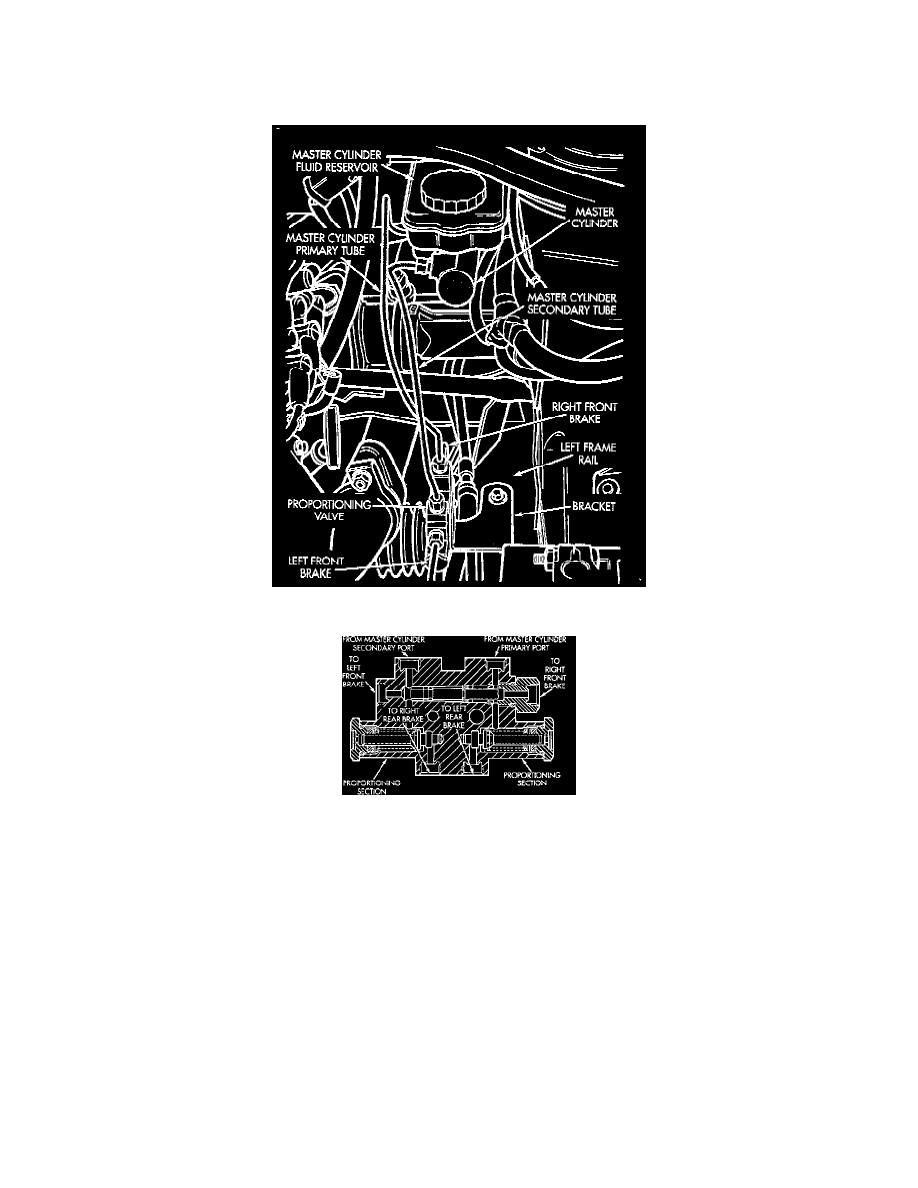Vision V6-3.5L VIN F (1997)

Brake Proportioning/Combination Valve: Description and Operation
NOTE: A Vehicle that is not equipped with antilock brakes, but is equipped as a Transitional Low Emission Vehicle (TLEV) having two front catalytic
converters, does not use the non antilock brake proportioning combination valve. The proportioning valves on a TLEV are in-line with the rear brake
chassis tubes.
Proportioning Valve Location (Non-ABS Without TLEV)
Fig. 33 Proportioning Valve
GENERAL INFORMATION
Vehicles not equipped with antilock brakes, (except TLEV) have a hydraulic system proportioning/combination valve in the brake hydraulic
system. The valve is attached to the frame rail below the master cylinder. The proportioning valve balances the front to rear braking by controlling
at a given ratio, the increase in rear system hydraulic pressure above a preset level. Under light pedal application, the valve allows full hydraulic
pressure to the rear brakes. There is only one valve assembly in each vehicle which is not equipped with antilock brakes. During any service
procedures identify valve assemblies by part number as well as split point (PSI) and slope. The hydraulic brake system, on non-ABS vehicles, is
split diagonally. The left front and right rear brakes are part of one system. The right front and left rear are part of another. Both systems are routed
through, but hydraulically separated by the proportioning valve. However, since the brake systems are split diagonally the vehicle will retain 50%
of its stopping capability in the event of a failure in either half.
OPERATION
The proportioning valve section operates by transmitting full input pressure to the rear brakes up to a certain point. This is called the split point.
Beyond this point it reduces the amount of pressure increase to the rear brakes according to a certain ratio. On light pedal applications equal brake
pressure will be transmitted to the front and rear brakes. On heavier pedal applications the pressure transmitted to the rear will be lower than the
front brakes. This will prevent premature rear wheel lock-up and skid. If hydraulic pressure is lost in one half of the diagonally split system, the
operation of the proportioning valve in the remaining half is not effected.
